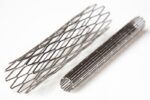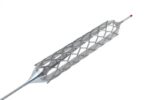ISAR-DESIRE 3 did not show that paclitaxel-eluting balloon may be useful for treating restenosis of a sirolimus–eluting stent. This study tests the safety and efficacy of a paclitaxel-eluting balloon versus a paclitaxel-eluting stent in cases of in-stent drug-eluting restenosis. We included 220 patients with in-stent restenosis of a drug-eluting stent ball randomized at a 1:1...
RIBS V: Pharmacological balloon vs second-generation drug-eluting stent in the treatment of BMS restenosis
The ideal therapy for treating in-stent restenosis continues to be debated . The pharmacological balloons showed good results in this context, but no direct comparisons available of pharmacological balloonsversus second-generation DES.This prospective, multicenter randomized 189 patients with in-stent restenosis of conventional stents receiving pharmacological balloon or everolimusDES.The primary endpoint was angiographicat 9 months spotting a...
Prediction of Restenosis After PCI with Contemporary Drug-Eluting Stents
Ashok Seth 2012-08-10
Patient Characteristics and PCI Strategies: How They Impinge on the Current Incidence of Coronary Restenosis
José Luis Leiva Pons 2012-08-08
Clinical presentation of restenosis in the three generations of DES
Original title: Clinical Presentation and Outcomes of Coronary In-Stent Restenosis Across 3-Stent Generations. Reference: Marco A. Magalhaes et al. Circ Cardiovasc Interv. 2014;7:00-00. Studies evaluating the clinical presentation of restenosis after implantation of bare metal stent showed that the recurrence of stenosis is not a benign complication as previously thought, with a significant number of patients with restenosis...
Paclitaxel coated balloon catheter vs. DES for DES instent restenosis
Original title: Paclitaxel – coated balloon catheter compared with drug- eluting stent for drug-eluting stent restenosis in routine clinical practice. Reference: SeijiHabara et al.EuroIntervention 2015; 10-online publish-ahead-of-printFebruary 2015. The paclitaxel coated balloon catheter (PCB) is not inferior to DES for the treatment of instent restenosis (IRS). The aim of this study is to compare the efficacy of the...
Direct Implantation of Drug Eluting Stents does not reduce restenosis
Original: Direct drug-eluting Stenting to reduce stent reestenosis (STRESSED). Reference: Wouter S. Remkes et al. J Am Coll Cardiol Intv, 2014;7: 751-8. Direct stenting, without predilation, has been considered a safe and effective technique that reduces procedural time, radiation exposure, contrast material and costs; however, the pertinent studies tested conventional stents only. This study aimed at assessing whether...
Superficial Femoral Artery In-Stent Restenosis with Drug Eluting Balloon: 2 Year Follow Up.
Original title: Drug-Eluting Balloons for the Treatment of the Superficial Femoral Artery In-Stent Restenosis. 2-Year Follow-Up. Reference: Vittorio Virga et al. J Am Coll Cardiol Intv 2014;7:411–5. Although the use of the self-expanding nitinol stent has improved angioplasty outcomes in femoropopliteal territory, restenosis remains a challenge still affecting at least 25% of the population in the first year....
Angioplasty in sirolimus – eluting stent restenosis is safe and effective beyond the change of drug.
Original title: Sirolimius-eluting versus paclitaxel-eluting stents in diabetic and non-diabetic patients within sirolimus-eluting stents restenosis: Results from the ISAR-DESIRE 2 trial. Reference: Sebastian Kufner, et al. Cardiovascular Revascularization Medicine 2014, 15:69-75. DES restenosis has always generated a challenge and a puzzle when defining the strategy of revascularization by angioplasty: A quite used concept was to switch to...
Everolimus-eluting stent and DEB in restenosis for BMS. Good results of both with some expected differences.
Original title: A Randomized Comparison of Drug-Eluting Balloon Versus Everolimus-Eluting Stent in Patients With Bare-Metal Stent In-Stent Restenosis: The RIBS V Clinical Trial. Reference: Fernando Alfonso et al. J Am Coll Cardiol. 2014; Epub ahead of print. Drug-eluting stents (DES) have proven to be superior in terms of restenosis than bare metal stents (BMS). BMS, however due...








